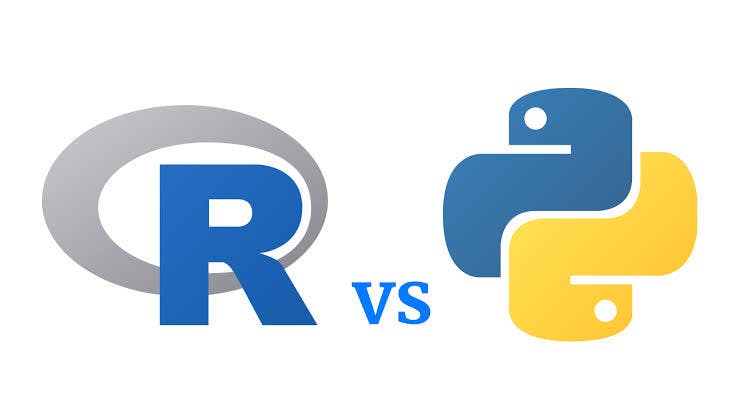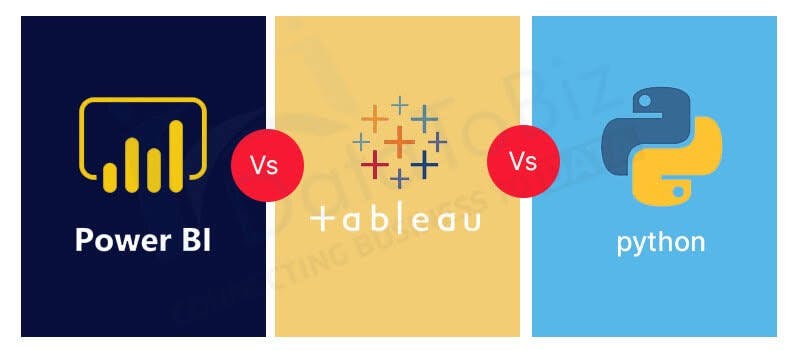Python: The Master Tool For Data Analysis
Why use python over other tools?

Photo by Hitesh Choudhary on Unsplash
Python
Python is an high level programming language, created by Guido Van Rossum and released in 1991. It is a powerful multipurpose programming language with application in web development, software development, prototyping, automation, data science, machine learning and many more. The unique versatility of python has made it one of the most preferred programming language.
Over the years, Python has garnered more popularity among new coders due to its easy to read syntax, which allows learning the language very easy and also due to its plethora of packages which can be used for various purpose.
What Is Data Analysis ?
Data analysis involves cleaning and transforming data to get useful insights and to examine patterns and trends.
The sole purpose of data analysis is to extract useful information from data and make informed decisions based on facts and not emotions. Data analysis helps in making predictions about future outcome based on current or past data and also in revealing trends that would otherwise be lost in mass of information.
A plethora of industries around the world use data to draw conclusions and decide on actions to implement.
Processes involve in data analysis include; data collection, data cleaning, data exploration and data visualization.
Examples of tools used for data analysis include power BI, SQL, python, Sisense, google data studio, metabase, chartio, mode, tableau, KMIME, looker, Domo, R, Spark, splunk, ApacheSpark, Rapid miner, Microsoft Excel, SAS, Grafana, Redash, and many more.
Data Analysis With Python
Despite the plethora of tools used for data analysis, Python has been regarded as one of the most important tool used for analyzing dataset. This is due to its huge library collection such as Numpy, Pandas, Matplotlib, Seaborn, which are used for carrying out ALL the processes involved in data analysis.
Unlike other tools used for data analysis, some are specifically for data cleaning while others are built for data visualization. Python’s ability to carry out data cleaning, data exploration and data visualization has made it a gem amongst all other tools.
• Data cleaning with python: Data cleaning is often regarded as the most demanding phase of data analysis. Data cleaning involves removing unnecessary column, renaming columns, removal of duplicates, replacing empty cells, changing data format, removal of unnecessary spacing, removal of rows, splitting columns, and many more.
Python provides an inbuilt library called; Pandas, for carrying out this data cleaning procedures. Pandas is the most popular python library which can be used for data processing purposes such as data cleaning and exploration.
Examples of pandas function for data cleaning include:
.isnull() for finding missing data
.drop_duplicates() for removing duplicated data
.fillna() to replace an empty cell with a value
.dropna() to drop rows or columns with null values
.replace()to replace a value
.applymap() to apply one or more function to the data frame
And so many more.
• Data exploration with python: The python pandas library also makes it very easy to analyze data using SQL-like queries.
Some pandas function for analysis and exploration include:
.describe()gives the statistical description of the data frame, eg mean, SD, percentile, etc.
.sort_values() for sorting rows using a specific column
.group_by() for grouping data according to a category
.cumsum() for getting cumulative sum
.count() for counting the total numbers of null-NA cells for each column or rows.
.unique()to find unique value in a category
.query() to find a query using a Boolean expression
.rank() to compute numerical data rank across along an axis
And so many more.
• Data visualization with python: Data visualization is the heart of data analysis, it helps in deep diving into a dataset and aids in getting unique understanding of trends, patterns and correlation.
Python libraries, Matplotlib and Seaborn are used for visualizing datasets.
Matplotlib provides a variety of plot such as line chart, bar charts, histogram, and scatter plots.
The seaborn library provides an higher level interface for creating graphs. It is a dataset oriented library for making statistical representations in python. The seaborn library can be used in creating charts such as barplot; a chart which automatically compute averages, and other charts like heat map, etc.
Asides the involvement of python in all the processes involved in data analysis, python also has an outstanding edge over other programming languages and tools used for data analysis.
In comparison with R:
 The R programming language released in 1995 was developed by statisticians with statisticians in mind, hence it focuses more on statistical analysis.
The R programming language released in 1995 was developed by statisticians with statisticians in mind, hence it focuses more on statistical analysis.
The R programming language is also limited in big data analysis and data science. In addition, for people with no coding experience, learning the R programming language could be quite difficult due to its complex syntax, and finding the right packages to use in R could be time consuming.
In comparison with Julia:
 The Julia language is a relatively new programming language for numerical analysis, computational science and also for data analysis.
The Julia language is a relatively new programming language for numerical analysis, computational science and also for data analysis.
The underdeveloped packages in Julia has been regarded as one of the many disadvantages of using Julia for data analysis.
In comparison with visualization tools:
 Tools used for data visualization such as power BI and Tableau are able to carry out data cleaning and visualization but are very limited in data exploration and analysis compared to Python.
Tools used for data visualization such as power BI and Tableau are able to carry out data cleaning and visualization but are very limited in data exploration and analysis compared to Python.
Conclusion
Over the years, insights gotten from analyzing data has become a crucial part in augmenting businesses and industries. Hence, finding the perfect tool to efficiently carry out data analysis has become a necessity.
The strength of python in carrying out all the processes involved in data analysis in faster time has made it the master tool for data analysis.
Thanks for reading.